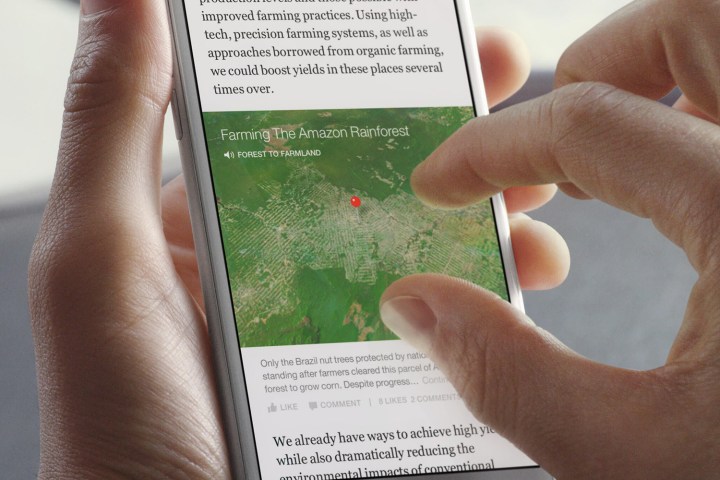
Instant Articles, launched last month, is heralded as the best way for media outlets to push content. According to Facebook, the platform leverages “the same technology used to display photos and videos quickly in the Facebook app,” which allows articles to load instantly, “as much as 10 times faster than the standard mobile Web.”
But speed aside, according to a report from The Wall Street Journal, these media outlets “are finding it difficult to extract as much revenue per article from Instant Articles as they do from pages on their own websites.” And that means that Facebook is going back to the drawing board with new advertising schemes, because let’s be honest, you’re connecting more with advertisers than you are with your friends when you’re logging onto social media these days.
As per sources familiar with the issue at hand, the problem with Instant Articles lies in its strict rules on ad volume and type. According to Facebook’s guidelines, advertisers are allowed one “large banner” ad (320 x 250 pixels) for every 500 words of text. When compared to how content appears on the publisher’s native platform, like the mobile app of The New York Times, three or sometimes four ads will appear within a single article. A bit annoying for the reader? Sure. More effective for the publisher? Absolutely.
Moreover, the WSJ notes, “Facebook is also restricting the type of ads publishers may place in Instant Articles,” and currently bans “rich media” ads, or those that allow for readers to interact with the content. But all these strict rules may change very soon, Instant Articles product manager Michael Reckhow says, and already, the platform is running some experiments with a greater number of banner ads and interactive, animated media.
“It’s early days with Instant Articles,” Reckhow says, “But one of our principles from the beginning has been to work collaboratively with our publishing partners to understand their needs and shape the product.”
Editors' Recommendations
- Facebook says Apple didn’t let it tell users about App Store tax
- Facebook will move Instant Games to main app, further simplifying Messenger


